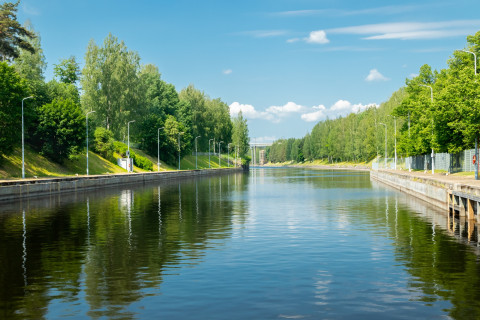Transboundary water cooperation between Finland and Russia has been identified as one of the most well-functioning examples of transboundary water cooperation in the world. According to a new World Bank report published this spring, there are four factors contributing to the success: a clear and strong formal mandate, trust and non-political nature of collaboration, fair sharing of benefits, and involvement of different levels of government and the private sector. However, adaptation to climate change poses a new challenge to the system.
The case study on Finnish-Russian transboundary water cooperation for the World Bank report was authored by Professor Antti Belinskij and Senior Lecturer Niko Soininen from the University of Eastern Finland, together with Senior University Lecturer Marko Keskinen from Aalto University.
“Transboundary water cooperation between Finland and Russia is a success story and can serve as an example to other countries with shared water basins,” Professor Belinskij says.
The study analysed Finnish-Russian cooperation in the Vuoksi River Basin, which is the most important one of the 19 major transboundary watersheds shared by Finland and Russia. The foundations for cooperation in the Vuoksi River Basin were laid down in the 1964 Frontier Watercourses Agreement between Finland and the Soviet Union. This agreement includes a compensation mechanism system that is globally unique. Over the years, geopolitical changes have not influenced the content of the agreement nor the collaboration based on it, as the focus has stayed on facts and matters at hand rather than politics.
The Finnish-Russian Commission on the Utilisation of Frontier Watercourses plays an important role in the enforcement of the agreement. The Commission does not have a permanent secretariat; instead, its operation is based on various working groups in which all levels of government are represented. Private sector representatives have also been invited to the working groups, which has facilitated well-functioning cooperation with the public sector.
Fair sharing of benefits also plays a key role in the cooperation. Concluded in 1989, the Vuoksi and Lake Saimaa discharge rule regulates the release of water from Lake Saimaa to the Vuoksi River to prevent damages caused by high and low water flows on both sides of the border. Discharges seek to maintain the natural water level on Lake Saimaa; not to maximise the production of hydroelectric power.
“The cooperation between Finland and Russia is based on the wider principle of equality. There is a tendency to maximise shared benefits and to minimise damages, with the emphasis being on the latter,” Professor Belinskij says.
In the future, the regulation of changing water conditions will assume an increasingly important role in Finnish-Russian transboundary water cooperation due to challenges posed by climate change.
For further information, please contact:
Professor Antti Belinskij, tel. +358 46 920 9189, antti.belinskij(at)uef.fi
Senior Lecturer Niko Soininen, tel. +358 50 437 6342, niko.soininen(at)uef.fi
Senior University Lecturer Marko Keskinen, tel. +358 50 407 5171, marko.keskinen(at)aalto.fi
World Bank report:
Antti Belinskij, Marko Keskinen & Niko Soininen. Vuoksi Basin: Three-Stage Process of Coordinated Basin Development. (101–134). Promoting Development in Shared River Basins. Case Studies From International Experience. World Bank Group (2018). https://openknowledge.worldbank.org/bitstream/handle/10986/29449/W17105.pdf?sequence=4&isAllowed=y
